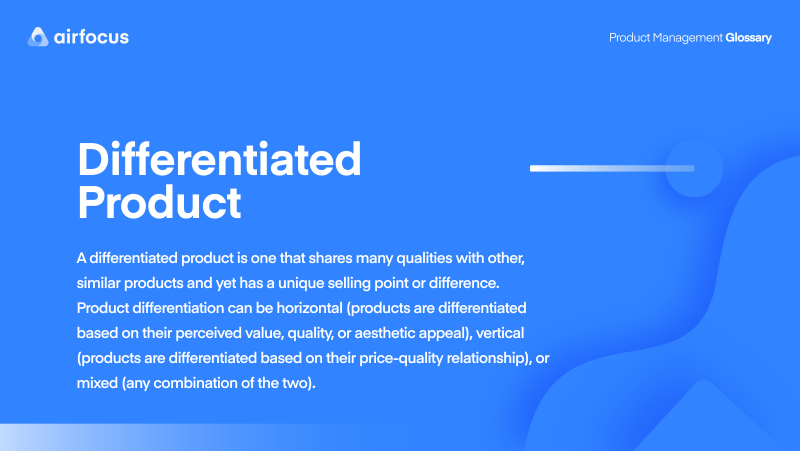Differentiated Product
What is meant by “differentiated product”?
Differentiated product definition
A differentiated product is one that shares many qualities with other, similar products and yet has a unique selling point or difference.
Cars are one of the most familiar examples of a differentiated product. At their core, all personal cars are more or less the same — they’re used to help people travel locally, run on a few fuel options, and follow a basic engineering template.
Despite these similarities, individuals are not only picky when it comes to purchasing a vehicle but also prideful. There are debates over which vehicles are best, strong customer loyalty, and different car brands have become entangled with many people’s personalities.
All of these factors were accomplished by differentiated product marketing strategies. This has allowed car manufacturers worldwide to offer essentially the same products (assuming they exist within the same category, i.e., car, truck, van, etc.).
What is an example of a differentiated product?
“Differentiated product” refers to products that can remain competitive despite being put against competing products that are very similar. Cars, smartphones, computers, shoes, and perhaps most notably, bottled water are just a few common examples of differentiated products.
Companies can also differentiate products by price. This includes cotton swabs, mobile device chargers, pencils, paper, and pet collars. These are things most of us purchase on a semi-regular basis, and yet most of us probably put little thought into which of these products we’re buying aside from the price and apparent level of quality.
What are other differentiation examples?
As mentioned, one of the most significant examples of product differentiation is bottled water. In reality, there is little separating the vast majority of bottled water brands aside from slight changes in mineral content. Even alkaline water, which is more acidic than distilled water, has contested benefits at best.
Despite all of these factors, bottled water is the most popular bottled drink in the United States of America. Most of us know at least one person who nearly exclusively drinks one brand of bottled water. This is an excellent example of the power of product differentiation and how marketers elevate a product from being non-differentiated to differentiated.
Types of product differentiation
Horizontal differentiation. This is the kind of differentiation we’ve covered so far. It uses emotional marketing to build customer loyalty and exaggerate USPs between similar products. These products can be differentiated (almost) regardless of price.
Vertical differentiation. Conversely, vertical differentiation is almost entirely dependent on the price of a product. Customer loyalty plays less of a role, but converting leads is also more straightforward.
Mixed differentiation. This type of differentiation is just a combination of the two other types of differentiation. People often argue that mixed differentiation is just horizontal differentiation.

General FAQ

Glossary categories
Create effective product strategy

Experience the new way of doing product management








